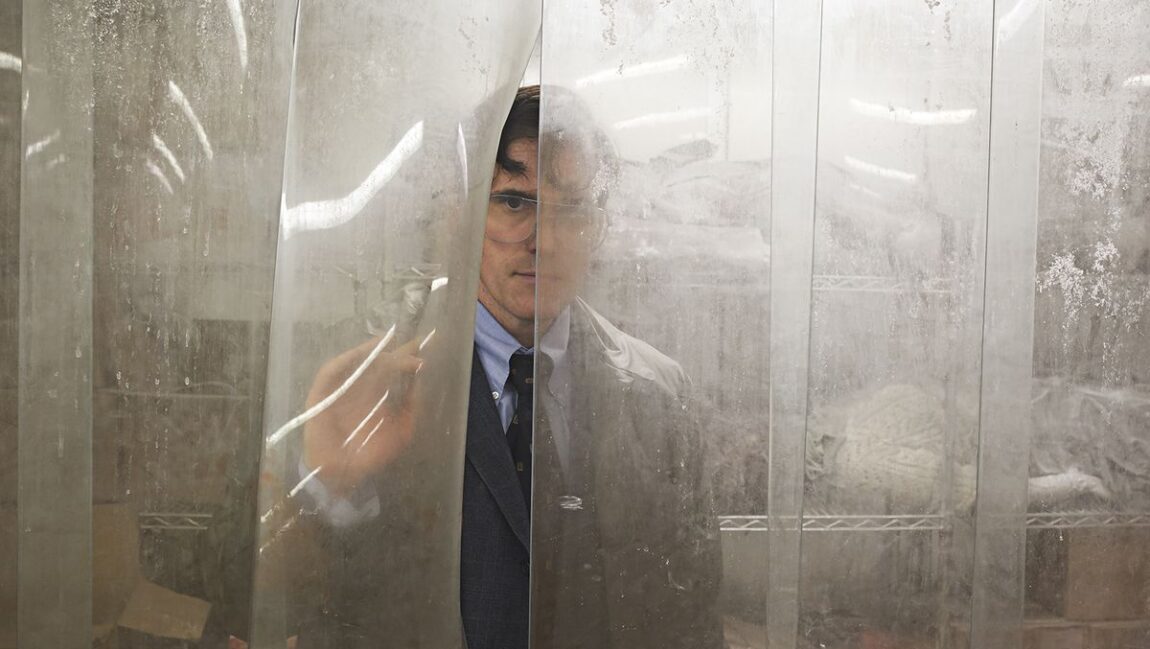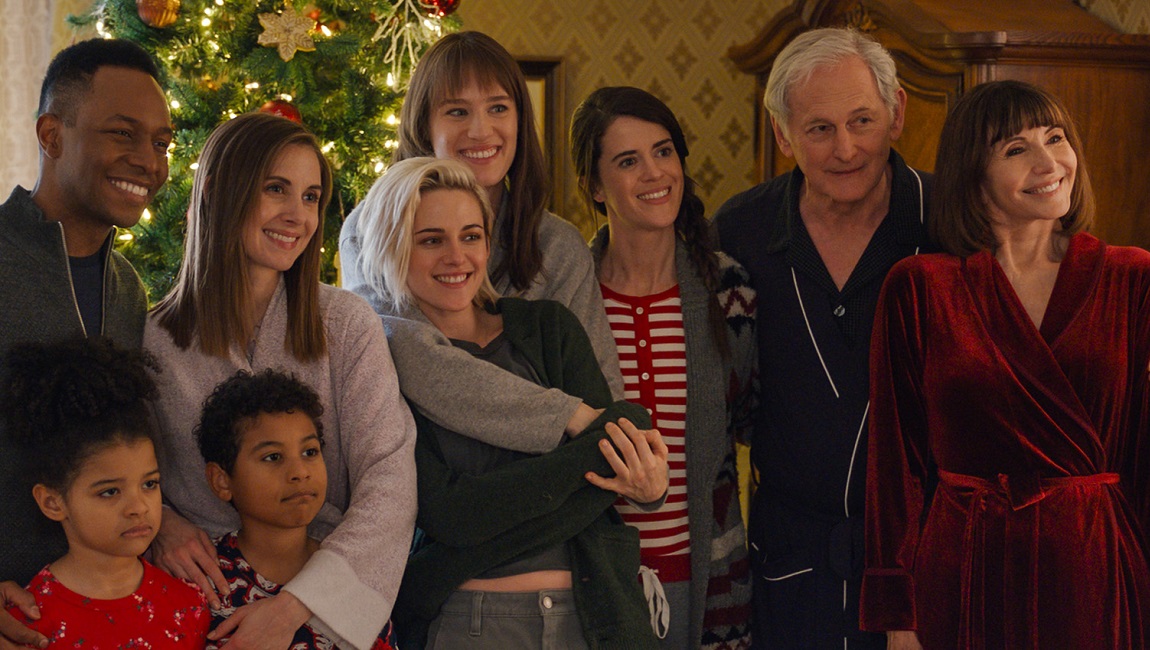Preceded by Ripe, Parlour Palm, and A Woman’s Block, Eve’s Parade is filmmaker Rebeccah Love’s final entry in a quartet of films depicting women who struggle against societal expectations, fall into madness, and recover with the help of neighbours. The first three films in this quartet have played through TIFF, VIFF, FNC, and CBC; been featured in the Montreal Gazette, the Psychiatric Eye (the Royal College of Psychiatry’s quarterly publication, UK); and premiered alongside talks by CAMH’s Chief Psychiatrists. In May, Love has been invited to deliver talks in London and Cambridge, UK through the NHS and residents’ associations about her creative depictions of psychosis and her vision for community crisis care.
Eve Parade will premiere on April 16 at the Paradise Theatre in Toronto. Author and film critic Mike Thorn sat down with Love to discuss her political and artistic visions, aesthetics, and form in Eve’s Parade, and her quartet’s various thematic concerns.
I’m inspired by your level of engagement, not only in multiple art forms, but also in community leadership, politics, and essay-writing (even your Instagram account provides essayistic accompaniment to its images!). I don’t know how you do it all. I’m particularly moved by your commitment to raising awareness around issues of mental health, especially within the context of contemporary ecological and sociopolitical crises (police brutality, class inequality, the unforgiving structures of neoliberal capitalism, etc.). Do you see a unifying vision in all this work, where each project is part of a larger whole, or do you approach everything on its own terms? Could you talk a bit about how you see the relationship between art and politics?
The expressions of my aesthetic and politics take many forms. I’m delighted to play around with photography, writing, painting, film, a little bit of music. I dance a lot on my own. I see each of these art forms as being small exercises in engagement and playfulness. It all sort of pours out of me in random patterns — these small projects might be united by the thread of a singular vision, but I wouldn’t be able to tell you exactly how I would define this singular vision.
Similarly, my political expressions jump around a little bit on the spectrum — I wake up every day feeling different thoughts about the world, and the art I create reflects a moral and political inconsistency. Everything I make is wrought with contradiction. But I try not to beat myself up over my ever-changing opinions and understanding of the world outside and the world within me. My art is a playground designed for mess, mistakes, learning, definitely not a place governed by certitudes.
You told me that you see your latest film, Eve Parade, as part of a sequence, preceded by Ripe, Parlour Palm, and A Woman’s Block. Did you come into directing each of these films with the knowledge that they would be connected, or was the thread something that presented itself to you more organically?
Each of these films was filmed out of sequence. It wasn’t until I completed Eve Parade that I realized the quartet of stories forms one singular narrative. So, yes, the thread presented itself to me organically.
The opening montage of Eve Parade visualizes a wavering and porous boundary between the public and the private, depicting various characters engaging in “private” activities in the more “public” outdoor spaces of their porches, front steps, and backyards. Where do you think the creation of art falls in this private-public dynamic? Can you talk about the function of the private and the public in your films?
In this quartet, the first two films (Ripe, Parlour Palm) take place within the domestic confines of a dining room, and feature only two characters: a husband and wife. In both of these two films, the claustrophobia of the room traps our two characters in domestic suffering, which soon unearths a painful psychosis in our female character (played by Sarah Swire).
As soon as we hit Eve Parade and A Woman’s Block, her illness is taken out onto the streets, into the public realm, for all her neighbours to see.
For families struggling with extreme mental illness, this is their worst nightmare: for a sick family member’s illness to be so bad that it pours out into the neighbourhood, for other neighbours to witness. So much of our struggles with mental illness take place behind closed doors, we are afraid to share what we go through with the people on our street.
The argument I am making in moving our character from the place of private secrecy to the vulnerability of going mad out in her neighbourhood, is that we should absolutely be made aware of our neighbours’ private sufferings. We should all absolutely be informed when our neighbour is going through psychosis… more than that, we should all be trained to respond to episodes of psychosis, suicidality, or any other crises requiring immediate care. We shouldn’t fear sharing our darkest moments with the public that surrounds us… Maybe in our crowd of neighbours, there are hidden resources, wells of empathy, people who are available to help.
The alternative is that those who experience crises lose their lives, because our collective crisis care plan is so inadequate, because we are afraid to bring these conversations into the public sphere.

Still from Eve Parade; Celina Clarke, Steve Kasan, Jack Rennie, Sarah Swire, Justine McCloskey; Image by Nikolay Michaylov
You stage Eve Parade’s opening montage as a series of tableaus, which precipitates a story driven largely by movement: Eve’s community rallying around her in a walk through the neighborhood in hopes of taking her to the hospital for treatment. What was the impetus for this powerful shift between stillness and movement in the film?
The stillness is used to paint the portrait of a happy, stable, calm neighbourhood.
Eve as a character brings chaos and movement into this “normal, conservative” world. Instead of fearing the disruption, the residents respond to this chaos with warmth and empathy. This interplay of calm and chaos hopefully reminds the viewer that the two can co-exist without violence or cruelty.
The beginning of Eve Parade positions the audience in direct eye contact with the protagonist, Eve, as she delivers a monologue about her “performance.” Eve suggests at one point that she might be someone the viewer personally knows. I thought this was a brilliant metareflective strategy that forces the audience into intimate proximity with a neurodivergent woman, the sort of subject they are too often culturally conditioned to immediately question or even disregard. Why did you choose to open the film with this meta-moment? What’s the function of this monologue?
As a person who lives with Bipolar Disorder, this monologue was so important to me. It is the first time we hear Eve speak. She is eloquent, persuasive, confident. Her words make sense. I wanted to empower the character before we see her descend into a messy mania, I wanted to show that she is an insightful person who maybe understands more about what is going on in her head than we might imagine. She is aware of an audience on the other side of the camera, she is aware that someone is listening in on her rants.
This is how my episodes of psychosis felt: I was convinced that my speech was important, that somewhere there was an audience ready to listen to what I had to say. But everyone around me, polite as they may be, only see the illness.
Eve Parade does a lot of interesting things with the interplay between comfort and discomfort. Your films all have distinct visual textures, and this one is no different. You capture such a comfy atmosphere within this downtown Toronto neighborhood, lushly green and brightly daylit, while also challenging the audience through the staging of the opening monologue, and through complicated subject matter (specifically, cultural responses to mental health challenges and the role of community in addressing these challenges), How did you conceptualize this dance between comfort and discomfort in the film?
I wanted Eve’s illness to disrupt the comfort of the neighbourhood, but in a way that prompted engagement instead of fear. Psychosis can be a terrifying condition to witness: what does it mean to superimpose this kind of ugly and harsh behaviour onto a picture-perfect neighbourhood? The immediate impulse for a person living in one of these nice houses is to respond in fear, and pick up the phone and call the police. In my dance between comfort and discomfort, I wanted to really underline Eve’s humanity and remind the residents of beautiful neighbourhoods like this that embracing discomfort is an important part of belonging to a caring community.

BTS from Eve Parade; Producer Mike Gillespie, Writer/Director/Producer Rebeccah Love, DP Nikolay Michaylov, Lead Sarah Swire, Actor Justine McCloskey; Image by Ben Dickie
You have a clear talent for working with actors. Your films are always anchored to committed, compelling performances, and your work captures rare levels of vulnerability and rawness in its subjects. Could you describe your process when it comes to working with actors?
We rehearse like theatre. I write a script, I give my actors ample space and freedom to play around within these boundaries. All of the actors of Eve Parade (Sarah Swire, Jack Rennie, Steve Kasan, Justine McCloskey, Celina Clarke) are credited as screenwriters: they each bring their own voice, their own opinions into the play space. I greatly value their input, their experimental impulses, their collaborative energies.
Like the preceding films in its sequence, Eve Parade features some expertly managed tonal oscillations between humour and sadness, tension and joy. Could you talk a bit about how you conceptualize tone as a director and a writer? What role does tone play in these films?
Psychosis is a deeply tragic condition, but there are absolutely moments of great humour to be found when a person is found in this altered headspace. In Eve’s behaviour, her quirky little moments are a part of what makes her so loveable. She is a person who deserves warmth and celebration, despite the strange behaviours caused by her disease. By interweaving humour and tragedy into her journey, I would hope that our audience can see that she suffers a great deal but is also capable of enormous joy, and of creating joy in other people.
Artist Bio: Rebeccah Love is a Toronto-based filmmaker, writer, visual artist and community organizer. She studied at the University of King’s College, then completed a BFA in Film Production at Ryerson University, and an MFA at the University of Guelph in Creative Writing. She has produced eight short films, focusing on love, illness and neighbourhoods. These stories have played TIFF, VIFF, FNC, Kingston, the Future of Film Showcase, and CBC. She is an organizer in the arts community: as editor of the Toronto Arts Report she pays close attention to developments in the worlds of theatre, fine art, filmmaking, writing, arts administration, and arts journalism. She is interested in questions relating to mental health, city planning, art history, and folk storytelling.







